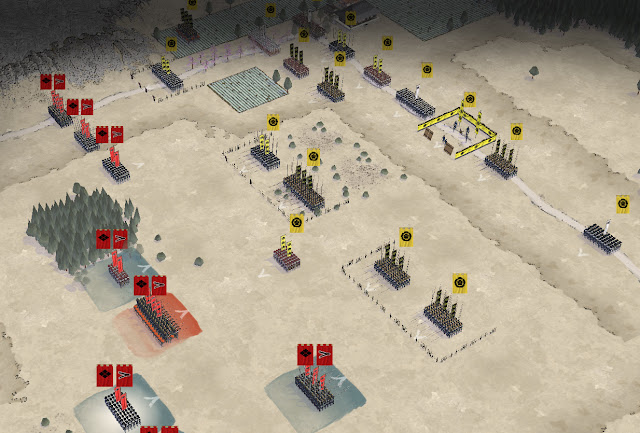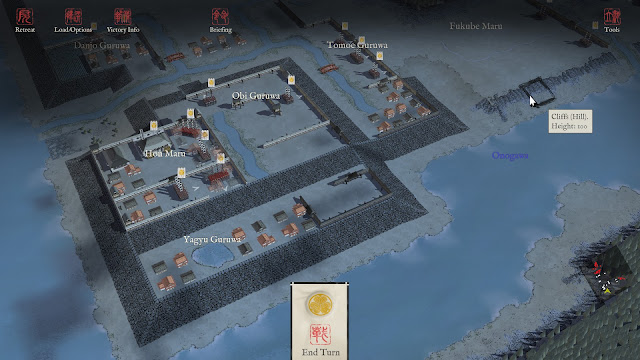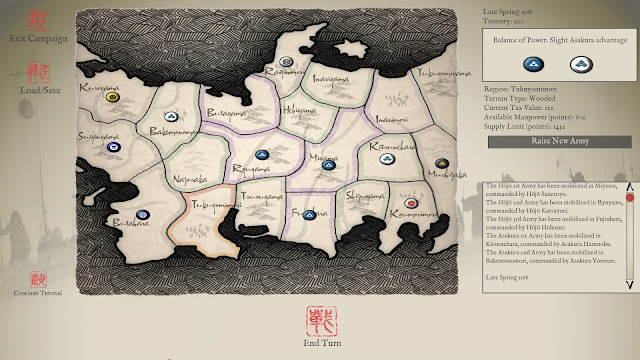Preview by Matt S.
Slitherine is one of the true niche players in the games industry. It has been around for many, many years now, and it has survived by having a very narrow focus, which it executes on to the exacting expectations of a very hardcore fanbase. Slitherine specialises in strategy games, and that’s never an easy audience to play to, because they like very complex games indeed.
Related reading: Pike & Shot, also from Slitherine, uses much the same engine as we see in Sengoku Jidai. Matt’s review here.
Slitherine’s upcoming strategy game, Sengoku Jidai: Shadow of the Shogun, might just turn out to be my favourite game from the maverick publisher to date… and I do love my Slitherine games. The name probably gives it away – this game grabbed my attention because it’s based on the Sengoku period of Japanese history. That’s the same period that Samurai Warriors and Nobunaga’s Ambition plays out in, and from a military strategy point of view, it’s one of the most interesting eras; right up there with Napoleon’s campaigns and the two world wars.
Of course, it’s an era that has been tackled in strategy games in the past. Paradox Interactive produced Sengoku, SEGA’s Creative Assembly took a crack in applying Total War to the time period, and Koei Tecmo’s aforementioned Nobunaga’s Ambition have all vied to be the most accurate spin on the tumultuous period in Japanese military history. Sengoku Jidai is very different, though. It comes to use from the same developer that produced the excellent Pike & Shot, and humble as it might look, the game’s strengths manage to outmanoeuvre the others in a couple of places; the unit-based strategic play, and the historical accuracy of it all.
In Sengoku Jidai, players are in control of an army, constructed of various units of soldiers that were around at the point of time in which the battle plays out. Then, in a turn-based fashion, the goal is to carefully manoeuvre units around the battlefield, taking into account flanking, charges, morale, supply, and fortifications, and ultimately achieve victory, typically by either routing enemy forces or holding together through a certain number of terms.
It’s tactically deep stuff, and because scenarios play out based on real conflicts through the era, there’s a real opportunity to prove yourself to be a better general than history’s real leaders. For the fan of Japanese history, like myself, seeing blocks units of samurai clash with ashigaru foot soldiers, as archers pepper one another in the background, is intensely interesting stuff. The developer has taking painstaking efforts to accurately model how each unit would behave on the battlefield, and it’s great fun trying to figure out what the most impactful use of an elite samurai unit would be when presented with well-entrenched enemy defences. It’s supported by a very simple graphics engine, but one that succeeds in making the battle map look like a work of minimalist Japanese art – and that is intensely aesthetically pleasing to my eyes.
The preview version that I’m playing is effectively the full game, with a couple of late-discovered bugs to squash and some fine-tuning of the balancing to be done yet, I’m told. There’s an impressive amount of content at this stage with a couple of campaigns focusing on the civil war in Japan, as well as Hideyoshi Toyotomi’s ill-advised invasion of Korea. There’s also a comprehensive skirmish mode that allows you to build your own armies and pitch them against other players (AI or real) for some fantasy battle action.
It’s a game specifically designed to appeal to the tabletop wargame sensibilities, in other words. You might not be painting your own miniatures or rolling dice, but you’ll be going through all the same actions, and enacting many of the same strategies that you would with a real tabletop game. I’ll reserve my final judgement for the game for the full release when it lands shortly, but I am quite convinced that I’m going to completely love the game. Further, I’m convinced that anyone who is interested in learning about military strategy through Sengoku era Japan will owe it to themselves to play this. Wars were fought differently in Japan when compared to, say, Europe, and on a strategic level it’s hard to think of a game that expresses the tactical side of battles back then with more authenticity than this one.
– Matt S.
Editor-in-Chief
Find me on Twitter: digitallydownld









